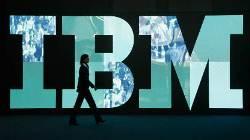Next 5 in 5: IBM predicts the future of technology
Meyerson, who plays a role in the annual exercise, says the most useful thing about the process is that it requires IBMers to think holistically about innovation. They can’t consider science and technology in a vacuum. They also have to think deeply about social trends, market conditions the willingness of people to pay for cutting-edge technologies. That’s the kind of thinking that can transform inventions into high-impact innovations.
We’ve been issuing the Next 5 in 5 predictions for the past six years. So, how are we doing? Mindful of the difficulty, and considering the fact that for most of the predictions less than five years have passed, we’ve done pretty well.
Two of the first year’s predictions, for instance, have pretty much come true:
We will be able to access healthcare remotely from just about anywhere in the world. Today, through telemedicine, patients can connect with physicians or specialists from just about anywhere via inexpensive computers and broadband networks. Doctors can view x-rays and other diagnostic imagery from thousands of miles away.
Technologies the size of a few atoms will address areas of environmental importance. Nanotechnology is now used in countless fields and industries, including agriculture, biotechnology and sensor networks, enabling us to understand and interact with the natural environment like never before.
Predictions from other years have panned out as well. A couple of examples:
You will have a crystal ball for your health. Thanks to advances in genetic research and high-performance computing it is now possible to affordably decipher an individual’s entire genome. This makes it possible for physicians to alert people to medical conditions they might fall prey to, and it clears the pathway, eventually, to truly personal medicine.
You will talk to the Web…and the Web will talk back. Today, speech recognition and mobile communications technologies make it possible for people to talk to the Internet using their computers or mobile phones, be understood, and listen to automated voices that are responsive to their needs.
The Next 5 in 5 initiative got its start in an IBM Innovation Jam in 2006. The seed goal was to get the entire company thinking about grand challenges. “If you give people a grand challenge you push them to really innovate,” says Meyerson. “That’s when extraordinary things can happen.”
IBM has played a significant role in each of these breakthroughs. So, it’s working.
By Steve Hamm
asmarterplanet.com/

